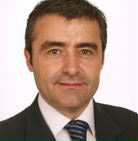Have you ever found a family harmony myth in your family client? Probably we all meet these myths when working with our clients. Probably years of experience bring you the professional clearance to work with it. However sometimes for a young practitioner it is not so clear.
“If you are going to talk about family conflicts never use the word conflict in your brochure” my friend and colleague Joan M. Amat told me in 2007, when I was preparing my first family business speech in Spain.
Right after Joan’s advice I recalled my first experience in the family business field. This first experience took place in 1996 in Barcelona with Adolf Vilanova, my first teacher in family business and colleague of Alberto Gimeno at ESADE Business School. My family and I had arranged a meeting with Adolf Vilanova to talk about our business issues.
When Vilanova and I were preparing this first meeting, he asked me: “Draw your family relations in a map, from your point of view, but do not show it to them”. Days after, while he was leading the family meeting, he was checking my family map of relations, hidden in between his notes over the table. He never showed it to my family.
But, why are we asked to hide these issues?
As a young professional in my late twenties I did not understand why my professor was hiding that “map of relations”. I only understood it several years later.
When David Bork accepted me as his mentee in 2006, he taught me how to use the Genogram to obtain quality information from the family. We had our first meeting in Amsterdam. Three intensive days talking about family business while I was writing down every single word he said. I did not want to miss anything. He worked over my Genogram as nobody had done before.
Bork was very spontaneous, obtaining information through my Genogram and reframing all that useful information for me. I still remember his advice: “The Genogram is a powerful tool to tease up family information. Use it carefully, you only have one chance to help your family client.”
Some years later, in 2008, I took my first real client, and as an amateur I made my first mistake: I went straight to the point. I was so proud of myself that I forgot my mentor’s warning.
My client, José, asked me for help since he had problems with his older brother and his younger sister in their family business. On one hand, he could not reach any agreement with his older brother, who seemed to be a good technician, but not a good manager. On the other hand, he did not know how to manage his youngest sister’s behavior. She refused to appear in the office to work while their mother insisted the he pay her a fair salary, that is, equal payment for every sibling.
José was talking about his situation while I was taking notes and asking for more details about their family relations. We even had a second meeting with all his family of origin in their homeland. Everything went very fine with José’s family of origin but, on our way to the airport, José told me that he did not want to go further on this consultancy process. He told me he was looking for a business consultant not for a family therapist. Even more, he told me I was wrong about asking so many questions to his family.
I was completely shocked. I could not understand such a misunderstanding. It seemed a paradox with a difficult solution.
Very soon after this experience I learned from my professor in family therapy, Juan L. Linares, how to deal with paradoxes since, for family therapists, it is very common to receive the following demand: “make changes in my family but do not change me.”
In response, he makes a clear statement saying that he is not in charge to change identities. He invites the family to use the therapeutic space to talk about things that could make them feel uncomfortable. The goal of these meetings would be reaching new agreements to find new balances in their lives.
Today, when the family client insists in talking about his/her family issues, I divert the conversation into a business one: “Thank you for all this relevant information about your family. How is this family dynamic influencing your business? What is your business about? What is your role in the business? Who is in charge of the manufacturer, warehouse, etc.?…”
Now I do not address family issues straight in our first meeting. Maybe next generations are more likely to talk about their family situation, since they are “suffering” the family rules, but I will never encourage a conversation like this in front of the patriarch.
When David Bork told me: “Genogram is a powerful tool, use it carefully” I did not understand the real meaning until I had that first experience. This was learning by doing, I guess. Indeed, my experience taught me that this tool can be so powerful that it may scare the toughest family. As a consequence, today I try to be more cautious, continue learning many techniques and calibrate when they can be used and how.
Today, in my first meetings with family clients I focus on their demands. What kind of needs they may have and what are their objectives at the end of the process. Then I invite them to take all the time we need to clarify these issues. And I never make any assumption about their family relations anymore!
Today I can feel the biggest fear from patriarchs: “the possible destruction of their family harmony myth”. In their world everything is correct:
“We worked hard to give our children the opportunities we could not have. Today we all live well, have money, jobs and welfare. We love each other. Children bring problems like in any other family, but everything is fine.”
Every family has its own harmony myth. Once you discover it, do not touch it!!
Today I have the opportunity to run a study group together with Miguel A. Gallo, and some other Spanish colleagues. In our meetings I pay close attention to Gallo’s procedure. He is always focused on corporate governance and business strategy, he never questions the family harmony myth. Only when the family is ready, do they address the family issues all together. This approach makes patriarchs comfortable and ready to talk about their family issues once they trust the advisor.
Thus, when working with family clients I have learned to slow down my rhythm and do not “enter in their family house” until they invite me to do so. Instead, we talk about the business strategy, functions and processes that can be improved…always being very cautious with their family harmony myth.
Among our colleagues in Spain we perceive that other cultures are not so protective with their harmony myth. But maybe we are creating our own myth in cultural differences, since we are making assumptions from other colleagues’ work.
That is why, through this article, I would like to open the discussion, not only with our colleagues in North America but also with our colleagues from other cultures. What about the Middle East countries, the rest of Europe, North Africa, Japan, India, etc.? Is this family harmony myth present in every culture? To what extent? What implications may it have for our professional services?
Thank you to all my colleagues, friends, professors and to my mentor David Bork for providing significant experiences in life.
About the contributor:
 Javier Macías is a family business consultant specializing in family communication and next generation leadership experience in European and Latin American family businesses. He is a professor in the International MBA program at EAE Business School in Barcelona. Javier can be reached at javier@franciscojaviermacias.es.
Javier Macías is a family business consultant specializing in family communication and next generation leadership experience in European and Latin American family businesses. He is a professor in the International MBA program at EAE Business School in Barcelona. Javier can be reached at javier@franciscojaviermacias.es.





